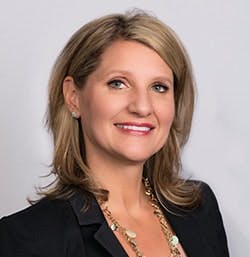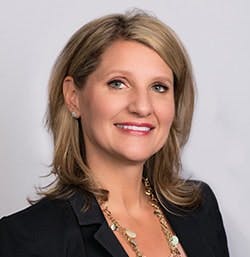How do we make our workplace more diverse and inclusive?
Cheryl Thompson spent 30 years working for Ford Motor Company. She started in 1986 as a dishwasher and steadily worked her way up at the company through multiple tooling and engineering roles. Thompson earned a bachelor of science in manufacturing and her MBA along the way and eventually became a global prototype manager at Ford. In 2018, she founded CADIA—the Center for Automotive Diversity, Inclusion and Advancement, a not-for-profit organization with a focus on advancing women into more leadership roles at automotive companies and supporting the industry’s next generation of decision-makers. In 2019, Thompson, a 2019 Influential Women in Manufacturing honoree, made CADIA her full-time focus, and in November, the organization announced the launch of CADIA 2.0, with an expanded focus encompassing development of all diverse talent in the industry. CADIA 2.0’s mission is to double the number diverse leaders in the automotive industry by 2030.
PS: What spurred the decision to make a deliberately inclusivity-focused organization even more inclusive?
CT: For one, inclusion is in our name, so that was one reason. We started out for women, and we started to see that women were running up against obstacles and that talent systems are not necessarily set up to support the full diversity and often they’re talking to each other. Lots has been done as far as women’s leadership training, training and development for women, all kinds of affinity groups, and often, we’re just in the room talking to ourselves. We have to bring leaders into the mix. So that was a big thing. The other thing is other dimensions of diversity or underrepresented talent began to approach us with the same concerns that women were facing. So, often they don’t feel like they belong; they were experiencing unconscious bias, had similar issues such as lack of access to the mainstream networks that help (other individuals) get ahead. So for all of those reasons we decided to sit down and really take a look and come up with a strategy. I call it the three Cs: How do we champion diverse talent; how do we drive systemic change; and how do we support the leadership commitment? Because we don’t want to leave the leaders out, either. They’re the ones that make the decisions, hold the influence, have the money, and who are helping others come along that ladder.
PS: When you mention unconscious bias, that’s something that we hear more and more about lately. And for me, I think about the example of, just because you don’t see something or you haven’t experienced it yourself, doesn’t mean it’s not a real phenomenon. Can you talk to me a little about how you define unconscious bias and how it crops up in the automotive industry?
CT: Sure. I think you described it perfectly. I have my own unconscious bias, and we’re all constantly learning. And I think the important thing about bias that’s something to remember is we can’t blame or shame, because we see the world with our perspective; we have our networks that we’re comfortable with, but we must begin to open up, look outside of ourselves and accept there may be a different way. There may be value in engaging (in different ways), in bringing people in to your network who are different from you. I’ve made mistakes myself and had my own biases and had to check myself. I think the reason it’s such a challenge in our industry, in automotive and manufacturing, is because it has been so male-dominated for such a long time, especially in the leadership positions. The higher up the pipeline you go, the more and more that exists. I think it’s a great, exciting time; people are starting to realize there may be another perspective to consider.

